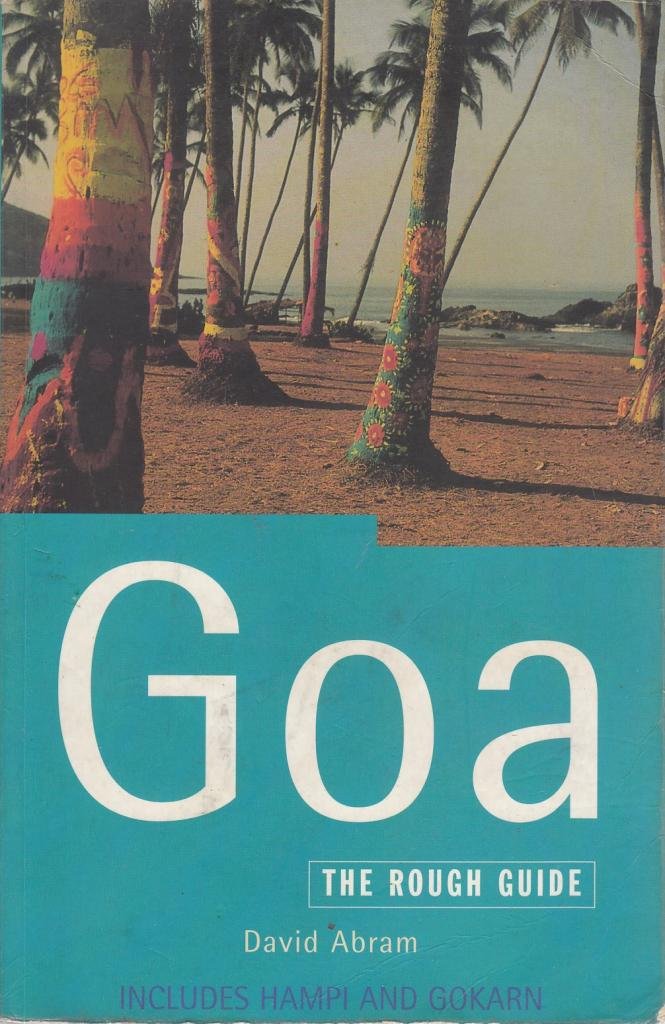If any word could be said to encapsulate the essence of GOA, it would have to be the Portuguese sossegarde, meaning “carefree”. For Goan expatriates, the term conjures up memories of long, lazy evenings on pillared verandahs, surrounded by tropical vegetation and the heady scent of cashew and frangipani flowers, with the crash of surf drifting periodically through a curtain of coconut palms. The pace of life in this former colonial enclave, midway down India’s southwest coast, has picked up over the past twenty years, but in spite of the increasing chaos of its capital, beach resorts and market towns, Goa has retained the laid-back feel that has traditionally set it apart from the rest of the country. Its 1.4 million inhabitants are unequivocal about the roots of their distinctiveness; while most of the subcontinent was colonized by the stiff-upper-lipped British, Goa’s European overlords were the dissolute Portuguese, a people far more inclined to enjoy the good things in life than their Anglo-Saxon counterparts.
Goa was Portugal’s first toe hold in Asia, brutally carved out by the explorer Alfonso Albuquerque in 1510, and served as the linchpin for a vast trade empire for over 450 years. However, when the Portuguese colonial mission began to flounder in the seventeenth century, so too did the fortunes of its capital. Cut off from the rest of India by a wall of mountains and hundreds of miles of unnavigable alluvial plain, it remained resolutely aloof from the wider subcontinent. While India was tearing itself to pieces in the run-up to Independence in 1947, the only machetes being wielded here were cutting coconuts. Not until 1961, after an exasperated Indian Prime Minister, Jawaharlal Nehru, gave up trying to negotiate with the Portuguese dictator Salazar and sent in the army, was Goa finally absorbed into India. The overland travellers’ trail wriggled its way south down the Konkan Coast from Mumbai a decade or so later, ensuring that this hitherto remote enclave of Latin-influenced culture would never be quite the same again.
Those visitors who came here back in the late 1960s and 1970s found a way of life little changed in centuries: Portuguese was still very much the lingua franca of the well-educated elite, and the coastal settlements were mere fishing and coconut cultivation villages. Relieved to have found somewhere inexpensive and culturally undemanding to recover from the travails of Indian travel, the blow-ins got stoned, watched the mesmeric sunsets over the Arabian Sea and partied madly on full-moon nights, giving rise to a holiday culture that soon made Goa synonymous with hedonistic hippies.
Since then, the state has largely shaken off its reputation as a drop-out zone, but hundreds of thousands of foreign visitors still flock here each winter, the vast majority of them to relax on Goa’s beautiful beaches. Around two dozen stretches of soft white sand indent the region’s coast, from spectacular 25-kilometre sweeps to secluded palm-backed coves. The level of development on them varies wildly; while some are backed by ritzy Western-style resorts, the most sophisticated structures on others are palm-leaf shacks and old wooden outriggers that have to be heaved into the sea each afternoon.
Goa’s beaches, however, are only a part of the picture. A short foray from the coast will take you into the state’s real heart, the densely populated strip inland – a lush patchwork of paddy fields, coconut and areca plantations, and gently meandering rivers. Further east, the jungle-covered hills of the Western Ghats separate Goa from the drier Deccan plateau, scattered with tiny thatch-roofed settlements and isolated communities of forest-dwelling farmers – direct descendants of the region’s aboriginal peoples.
Wherever you travel in Goa, you’ll find traces of former Portuguese domination, creating an ambience that is at once exotic and strangely familiar. Gabled Baroque church facades nose tantalizingly above the tropical treeline, padres in long cassocks cycle to mass, fishermen wear crosses and Madonna medallions, and on Sunday evenings Christian families take a leisurely stroll in their best clothes, the women in carefully tailored dresses, the men in slacks and shirts. Blending the Latin love of meat and fish with India’s predilection for spices, Goan food, too, is quite unlike any other regional cuisine in Asia, as is the prevalence of alcohol. Beer is cheap, and six thousand or more bars around the state are licensed to serve it, along with the more traditional tipple, feni, a rocket fuel spirit distilled from cashew fruit or coconut sap.
Outside the Christian heartland of central Goa, the temples, rituals and exuberant festivals of Hinduism, the religion of more than two-thirds of the state’s population, mingle easily with more recently implanted traditions. Unlike many parts of India, religious intolerance is a thing of the past here; faced by the threat of merger with neighbouring states, Goans have always put regional cohesion before communal differences at the ballot box, and some of the state’s principal religious festivals – notably Christmas, Carnival and Diwali – are celebrated by adherents of both faiths.
However, the debate over statehood and identity has gradually come to dominate the political agenda in Goa over the past decade or so. Following New Delhi’s recognition of Konkani, spoken by the vast majority of Goans, as the official state language in 1992, the press platformed calls for greater autonomy, as well as curbs on immigration from other Indian states. Goa is considerably more prosperous than adjoining regions, and this has stimulated a vast influx of economic refugees, the poorest of whom live in shanty settlements around the construction sites where they work. Among the main employers of migrant labour in recent years has been the Konkan Railway, completed in 1997 to form a super-fast land link with Mumbai – another stimulus for economic growth that threatens to bring with it lasting changes.



